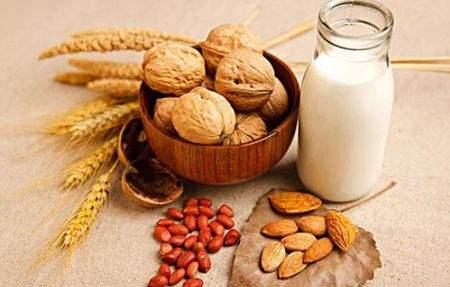
Dietary fiber series, as an important nutrient, plays an extremely important role in human health and metabolism, and is one of the seven essential nutrients for human life and healthy growth. With the improvement of living standards, people begin to pursue the fine processing of food, which makes a large amount of dietary fiber loss, resulting in insufficient dietary fiber intake of the human body, so it is necessary to strengthen the content of dietary fiber in food processing.
Dietary fiber can be divided into water-soluble dietary fiber and water-insoluble dietary fiber according to its solubility in water. At present, rough and not smooth water-insoluble dietary fiber processing products taste poor, and polymer water-soluble dietary fiber due to high viscosity, high gel and other characteristics, the application of food processing is not mature. Therefore, dextrin resistance of low-molecular-soluble dietary fiber with good processing characteristics such as low viscosity, easy absorption and solubility catches people’s eyes.
In recent years, through animal experiments and clinical trials, researchers have proved that resistant dextrin has the functions of controlling body weight, regulating blood lipids, lowering blood sugar, promoting mineral absorption, improving human immunity, regulating intestinal flora, and promoting uric acid excretion, making it a hotspot in the field of water-soluble dietary fiber.
We mainly have two types of water soluable dietary fibers:
1, Resistant dextrin
Resistant dextrin (also known as indigestible dextrin) is a carbohydrate mixture made of starch as raw material, which is partially degraded after heat treatment in acid solution and then obtained by glycosyltransferase reaction. The part of resistant dextrin contains α-1, 6, α-1, 2, α-1, 3 glycosidic bonds and other links cannot be digested by digestive enzymes in the body. Because resistant dextrin is difficult or slow to be digested in the human digestive system, it is used as a puffer, fat substitute, prebiotics, dietary fiber, etc.
Resistant dextrin is a white pale yellow powder, slightly sweet, soluble in cold water, insoluble in ethanol, low viscosity of aqueous solution, and viscosity is little affected by shear rate and temperature. Resistant to heat, acid, pressure, freezing, low Browning and storage, resistant to food will not change the quality of food, resistant to dextrin also has the function of lowering blood sugar and cleaning intestinal tract, so it is widely used in health care products, dairy products, baby food, bakery products and meat products.
2, Polydextrose
Polydextrose is a kind of water-soluble dietary fiber, chemical formula is (C6H10O5)n It is white or almost white solid particles, soluble in water with a solubility of 70%. The PH value of 10% aqueous solution is 2.5-7.0, with no special taste. It is a food component with health care function and can supplement the water-soluble dietary fiber required by human body. After entering the digestive system of human body, it produces special physiological metabolism function, so as to prevent constipation and fat deposition.
Polyglucose is a D-glucose polymer made of glucose, sorbitol and citric acid as raw materials, heated into molten mixture in a specific proportion, and then condensed by vacuum. Polyglucose is an irregular polycondensation of D-glucose, mainly bound by 1, 6-glycosidic bonds. The average molecular weight is about 3200, and the limit molecular weight is less than 22000. The average degree of polymerization is 20.
Comparasions of Resistant Dextrin & Polydextrose
| Product Comparison | Resistant Dextrin | Polydextrose |
| Production Process | By dextrinization in acidic condition with edible starch as raw material | By glucose, sorbitol, citric acid or phosphoric acid mixed in a certain proportion, under high temperature heating polymerization refining (and neutralization, decolorization) |
| Molecular Structure | Branched chain mixtures linked by α-1,2, α-1,3. α-1,4, α-1,6 glycosidic bonds | α-1,6 glycosidic bond is the main link |
| Product Category | Common food raw materials | Food additives |
| Water Activity | Comparatively Low | Comparatively High |
| Fresnel Absorption | Non-hygroscopic | High purity : Non-hygroscopic Ordinary purtiy : Hygroscopic |
| Price | Comparatively High | Comparatively Low |
| In common | Both are polymers of glucose & both are water-soluble dietary fibers | |
Functional Characteristics of Dietary Fiber
![]() High digestive tolerance
High digestive tolerance
![]() Low glycemic index
Low glycemic index
![]() Low insulin index
Low insulin index
![]() Low calorie
Low calorie
![]() Prevent dental caries
Prevent dental caries
![]() Easy to dissolve
Easy to dissolve
![]() Lower blood glucose
Lower blood glucose
![]() Lower blood lipid
Lower blood lipid
![]() Maintain the intestinal tract
Maintain the intestinal tract